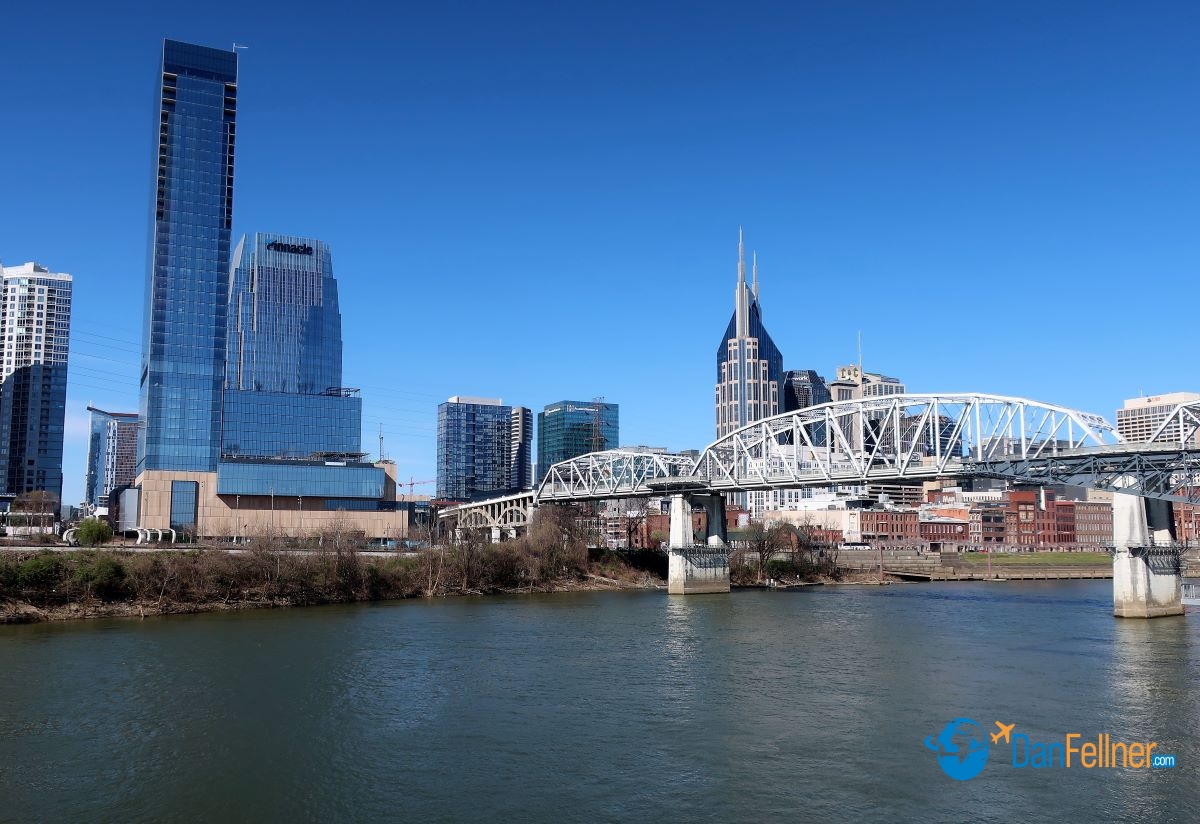Seven must-see music-themed attractions in Tennessee’s capital city
The Arizona Republic — April 10, 2022
NASHVILLE – It’s hard to imagine a travel destination more deserving of its moniker than this city on the Cumberland River in north-central Tennessee.
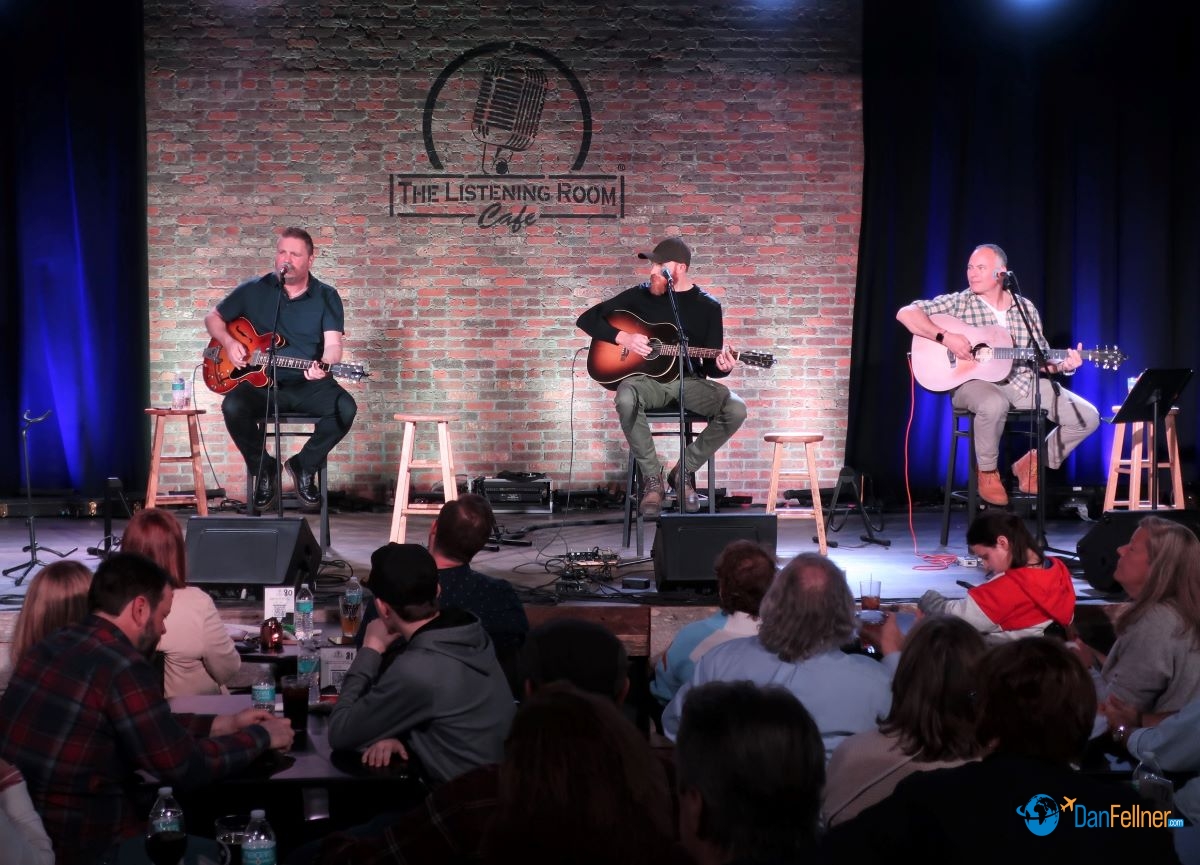
The Listening Room Cafe, one of about 180 live-music venues in Nashville.
“Music City” isn’t just a mellifluous marketing slogan invented to attract tourists. It epitomizes the ethos and spiritual core of Tennessee’s capital and largest city, which has become a magnet for musicians, record producers and fans not just of country music but other genres as well.
As Tennessee’s favorite daughter Dolly Parton penned in her 1973 song “Down on Music Row” when referring to Nashville’s multitude of recording studios and radio stations: “If you want to be a star, that’s where you’ve got to go.”
During a recent four-day trip to Nashville, I was engrossed in the city’s unrivaled music scene, visiting the Country Music Hall of Fame, several music-themed museums, neon-lit honky-tonks in an area of downtown known as “SoBro,” and one of the most celebrated hit-producing recording studios in music history.

A plaque of Dolly Parton hangs in the rotunda of the Country Music Hall of Fame and Museum in Nashville. The Tennessee-born Parton was inducted in 1999.
I also toured the historic auditorium known as the “Mother Church” of country music and attended a performance at a venue considered by many to be the epicenter of live country music – the Grand Ole Opry.
“There’s really no other city in the world per capita with the number of people making music than Nashville,” says Heather Middleton, senior vice president of marketing at the Nashville Convention & Visitors Corp., noting that the city has some 180 live-music venues.

A band performs at Layla’s, one of the many honky-tonks on Lower Broadway in downtown Nashville.
Never a huge fan of country music growing up, I wasn’t motivated to visit Nashville until I watched “Country Music,” the eight-part, 16-hour 2019 PBS documentary by Ken Burns. I learned there was so much more to the genre than banjos, fiddles and hokey lyrics about driving trucks and drinking beer.
There’s no better place than Nashville to learn about the lives and music created by the legends Burns chronicled in his documentary.
Here are my seven favorite music-related sites to see in Nashville. Except for the Grand Ole Opry, all are downtown in close proximity to each other.
The Country Music Hall of Fame and Museum
Known as the “Smithsonian of Country Music,” the Country Music Hall of Fame and Museum is a great starting point to learn about the rich and colorful history of the genre.
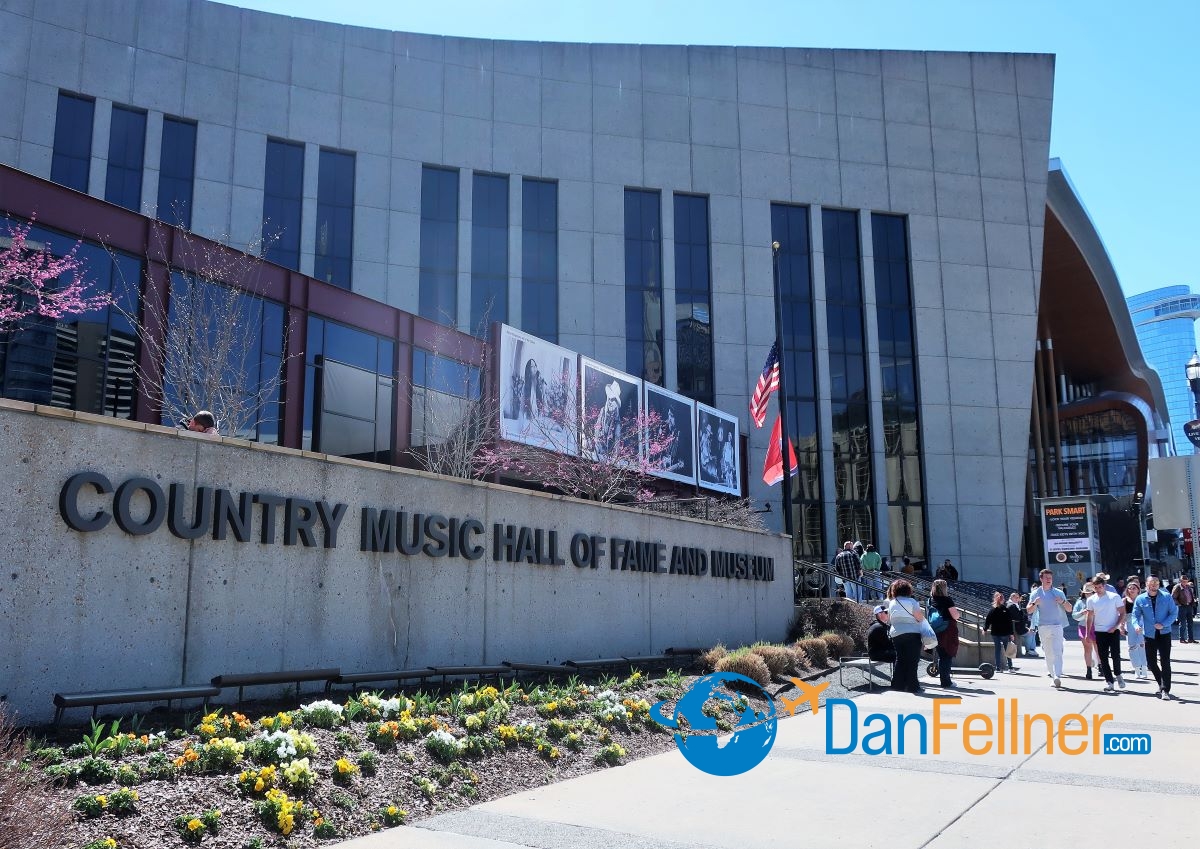
The Country Music Hall of Fame and Museum.
It’s on a downtown street recently renamed Rep. John Lewis Way after the late civil-rights icon. The museum houses the world’s largest collection of country-music artifacts, including 500 musical instruments. It took me about two hours to tour the museum.
The Hall of Fame’s rotunda is adorned with the title of a popular hymn written in 1907 called “Will the Circle Be Unbroken,” designed to represent the continuous nature of country music. The rotunda’s walls display the plaques of the 146 artists – including Hank Williams, Dolly Parton and Willie Nelson – who have been inducted.
RCA Studio B
The Hall of Fame also operates guided tours to the historic RCA Studio B, billed as “Home of 1,000 Hits.” Built in 1957, Studio B became known as the birthplace for the Nashville Sound, a style characterized by background vocals and strings.
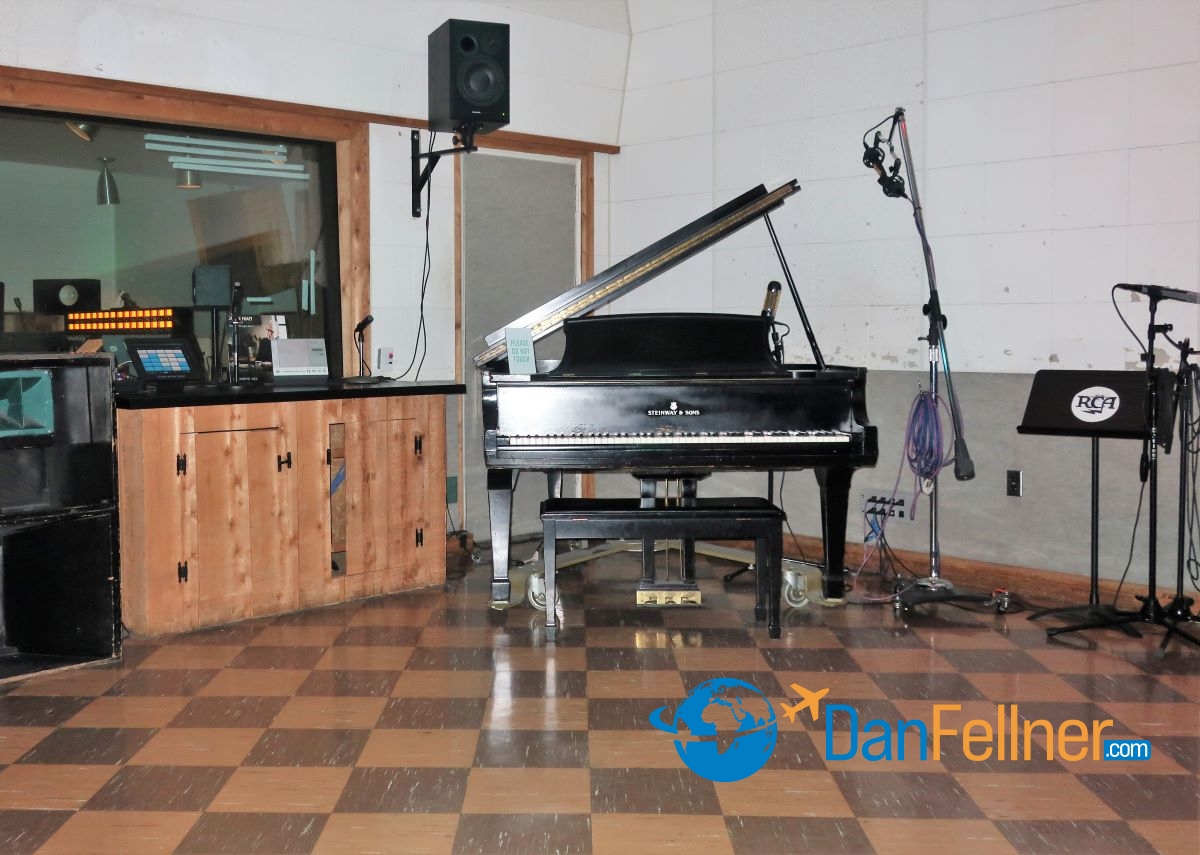
Inside the historic RCA Studio B. Artists such as Elvis Presley, Dolly Parton and Carrie Underwood recorded hit songs here.
Elvis Presley recorded some 200 songs here – they even let you sit at the Steinway Piano he played on some of his recordings. Charley Pride, Carrie Underwood, Fats Domino and the Everly Brothers are some of the other artists who recorded music at Studio B.
The tour takes about one hour and includes a five-minute bus ride from the Hall of Fame. It’s best to reserve tickets at least a day in advance as the tours fill up quickly.
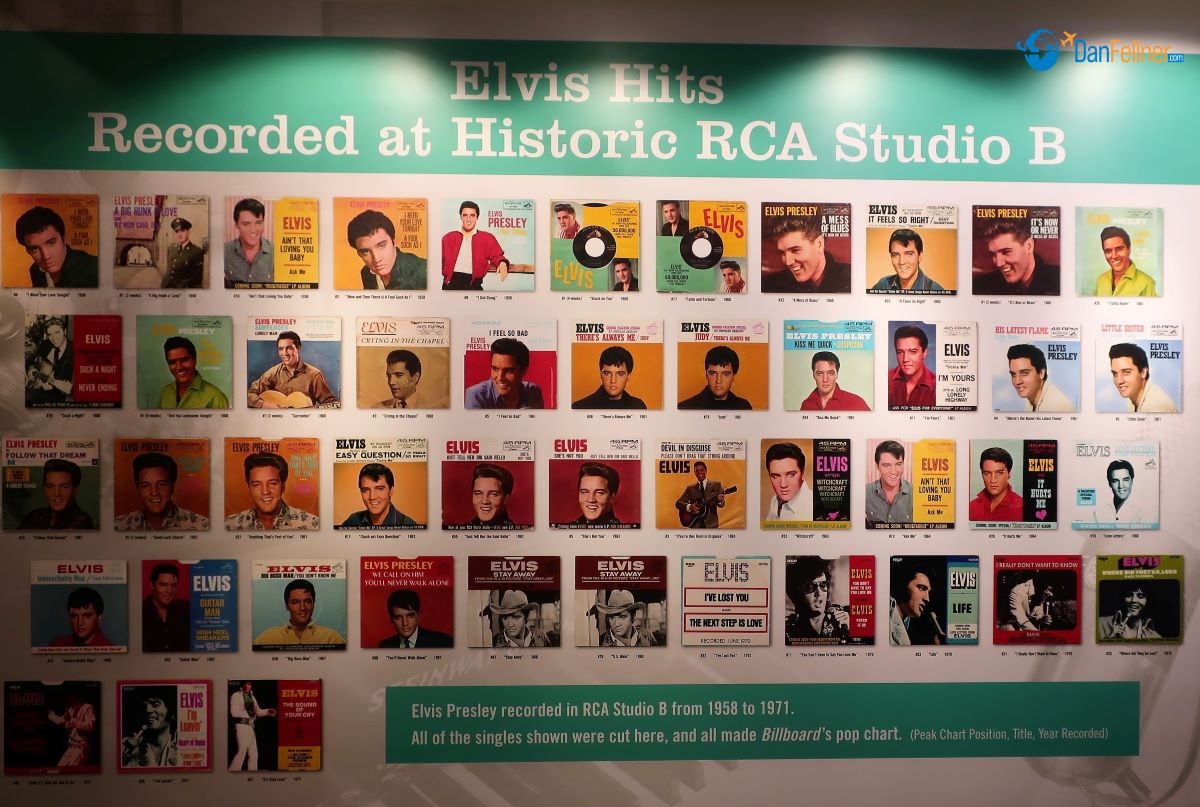
Some of the many hit songs recorded by Elvis Presley at Nashville’s RCA Studio B.
Ryman Auditorium
Built as a church in 1892 – hence the moniker “Mother Church of Country Music” – the Ryman was home to the Grand Ole Opry from 1943 to 1974. The 2,362-seat theater is known for acoustics that rival Carnegie Hall.
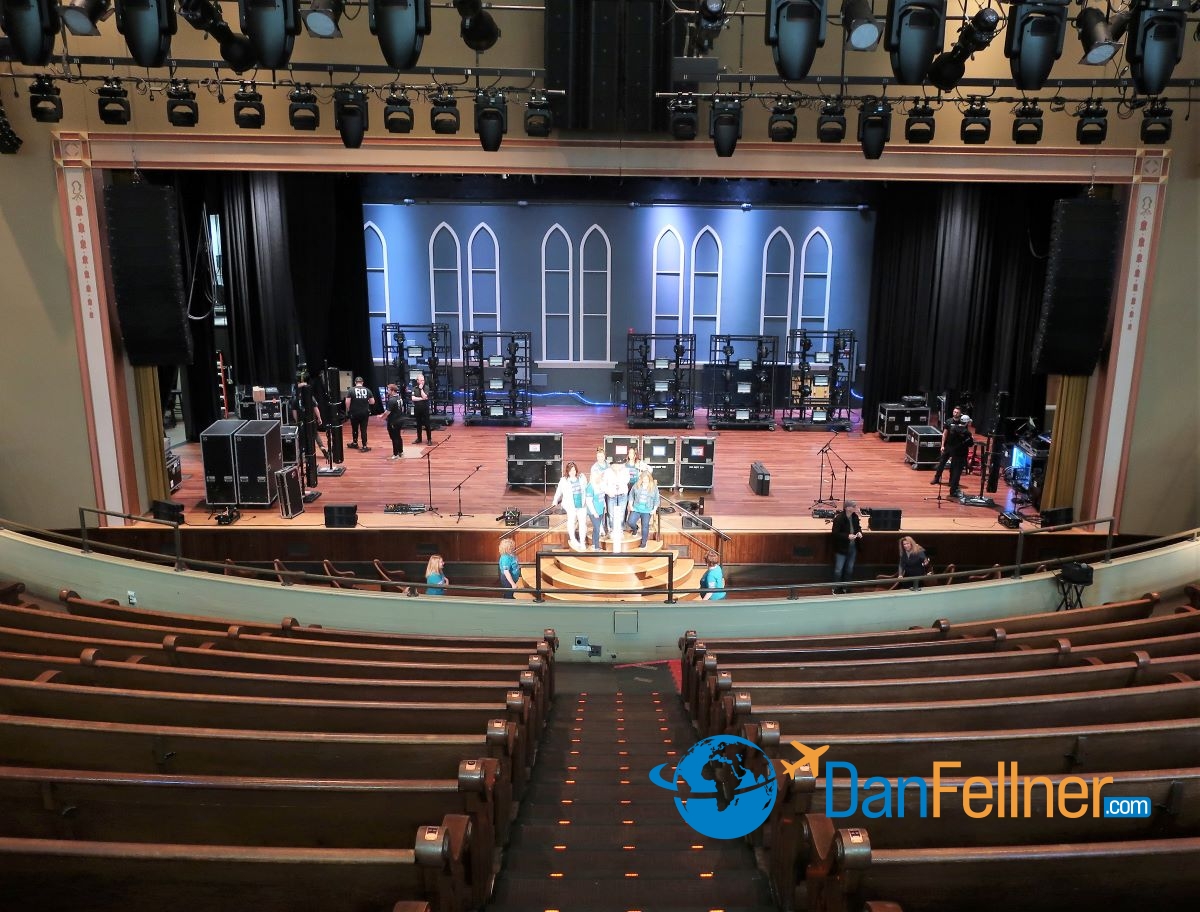
The famed Ryman Auditorium in downtown Nashville.
The theater has been designated a National Historic Landmark for its pivotal role in the popularization of country music. The oak pews on the main floor date back to the building’s construction.
The Ryman is still a prominent live-music venue, hosting 200 performances a year of all genres. In recent years it has featured such diverse acts as Coldplay, Ringo Starr, Bruce Springsteen and Wu-Tang Clan.
National Museum of African American Music
The newest addition to the Nashville music scene, the National Museum of African American Music recently celebrated its one-year anniversary.
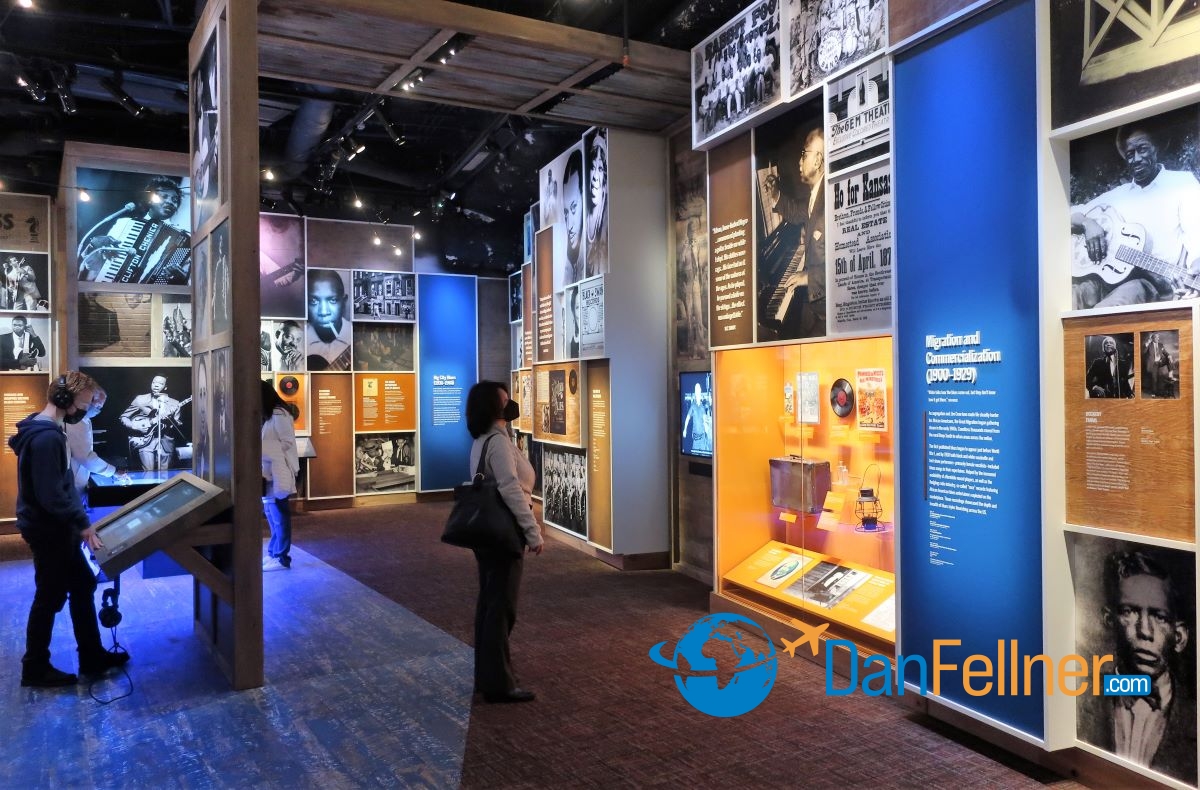
The newest attraction to the Nashville music scene, the National Museum of African American Music.
The highly interactive museum is dedicated to preserving and celebrating the more than 50 music genres created, influenced and inspired by African Americans. I especially enjoyed an exhibit about the legendary Nat King Cole, the first African American performer to host a network television series.
“It is as much of a history museum as it is a music museum,” says Middleton.
Johnny Cash/Patsy Cline museums
Museums devoted to two of country music’s most revered performers are housed downtown in the same red-brick building.
On the ground floor, visitors will find the most comprehensive collection of Johnny Cash artifacts and memorabilia in the world. As I learned while perusing one of the exhibits, the “Man in Black” holds the distinction of being the only artist to have been inducted into the Country, Rock and Songwriters halls of fame.
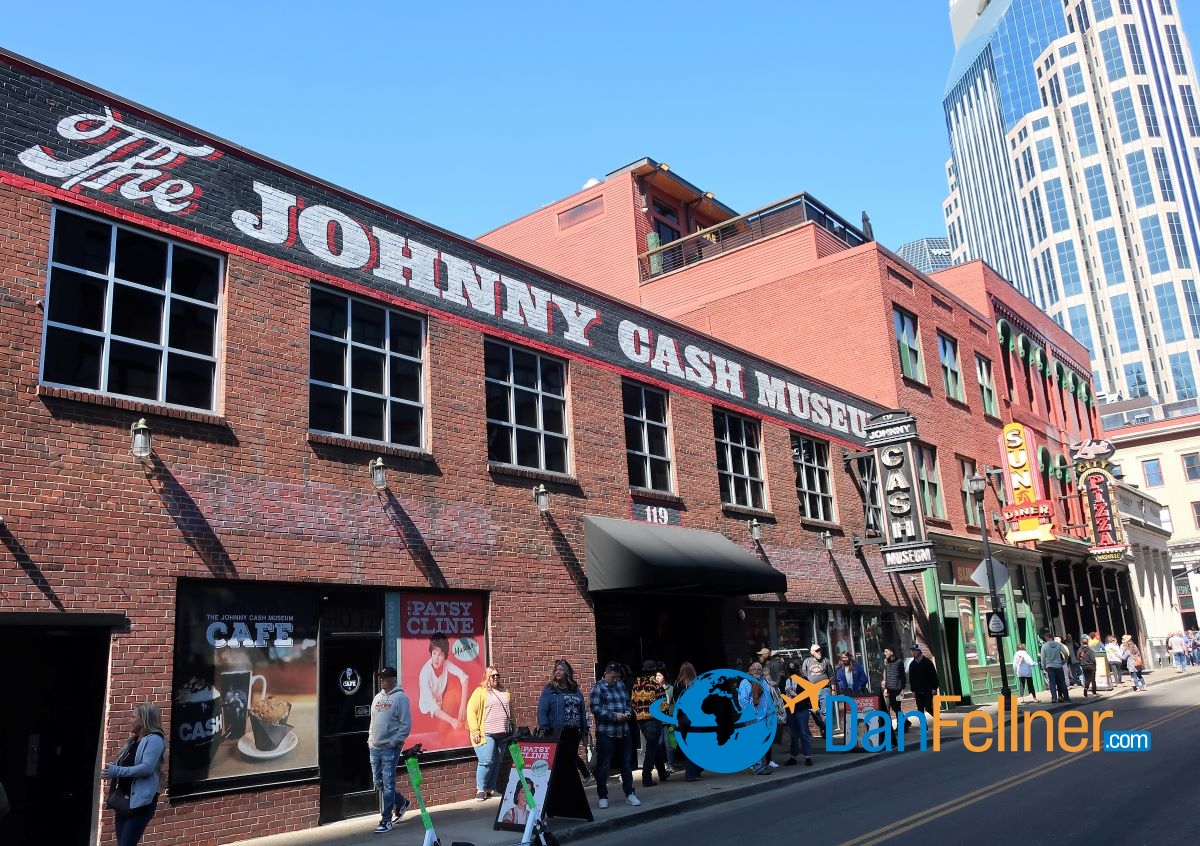
The red-brick Johnny Cash Museum in downtown Nashville. The building also houses the Patsy Cline Museum.
Upstairs, the Patsy Cline Museum celebrates the life of a performer some consider the greatest female country-music vocalist of all time. Remembered for such hits as “Crazy” and “Walkin’ After Midnight,” Cline died in a plane crash in 1963 at the age of 30.
Each museum requires a separate admission ticket. Allot two hours to see both museums.
Grand Ole Opry
It’s hard to envision a more fitting way to culminate a tour of Nashville than seeing a Saturday-night performance at the Grand Ole Opry. Located in a 4,372-seat theater 13 miles northeast of downtown, the Opry moved here from the Ryman in 1974.
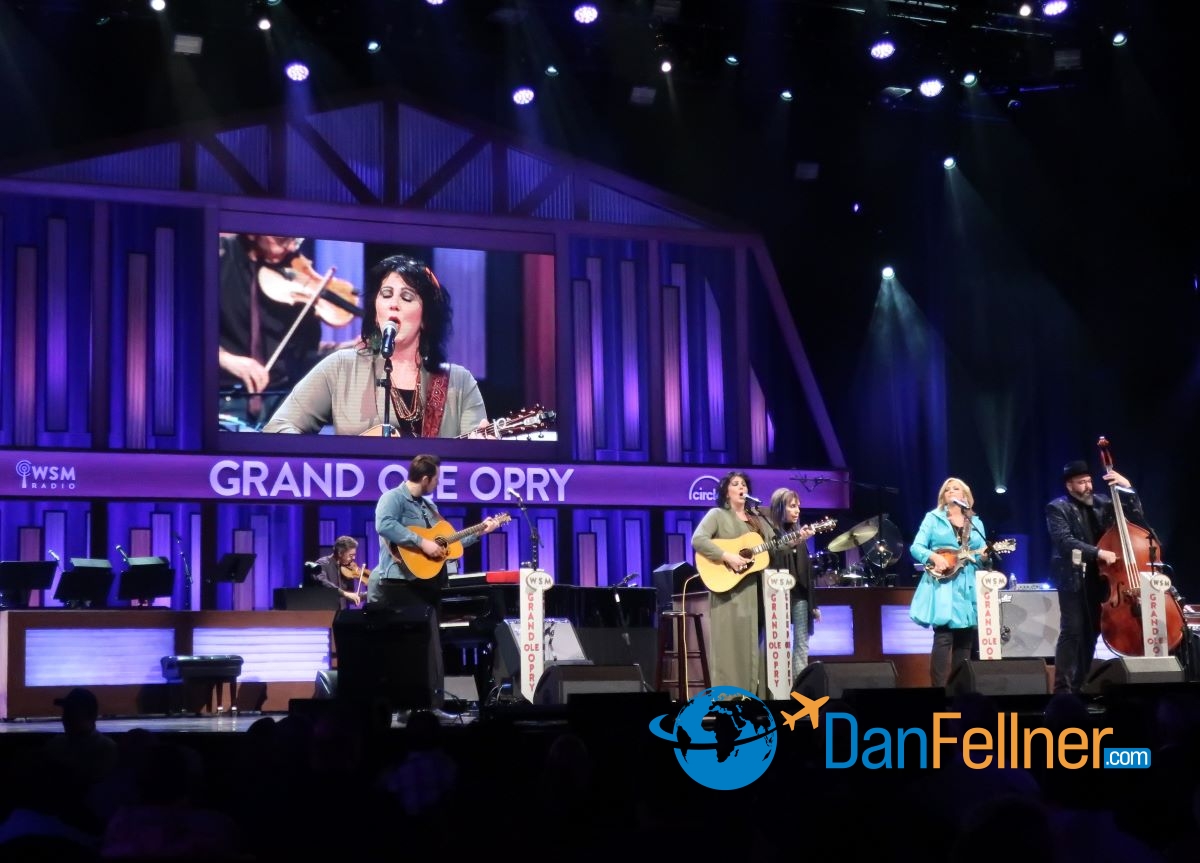
A Southern gospel group called The Isaacs performs at the Grand Ole Opry.
The Opry originated in 1925 as a radio program; it’s still broadcast on Nashville’s WSM Radio, making it the longest-running radio show in U.S. history.
There were nine acts at the 2½-hour show I attended, including square dancers, a comedian and groups that performed everything from mainstream country to bluegrass to Southern gospel.
There also are Grand Ole Opry performances every Tuesday and Friday night in April and “Opry Country Classics” shows on most Thursdays.
Hot chicken

The spiciest variety of hot chicken — called “Shut the Cluck Up” — served at Hattie B’s.
Aside from its status as a hotbed of music, the city is also known for its many hot chicken restaurants, which serve fried chicken cooked with varying degrees of spice.
I had lunch at the popular family-owned Hattie B’s across the street from Bridgestone Arena, where the Nashville Predators hockey team plays.
There was a long line of people waiting outside the restaurant in 50-degree weather to choose one of six heat levels ranging from mild Southern to the tongue-numbing “Shut the Cluck Up.”
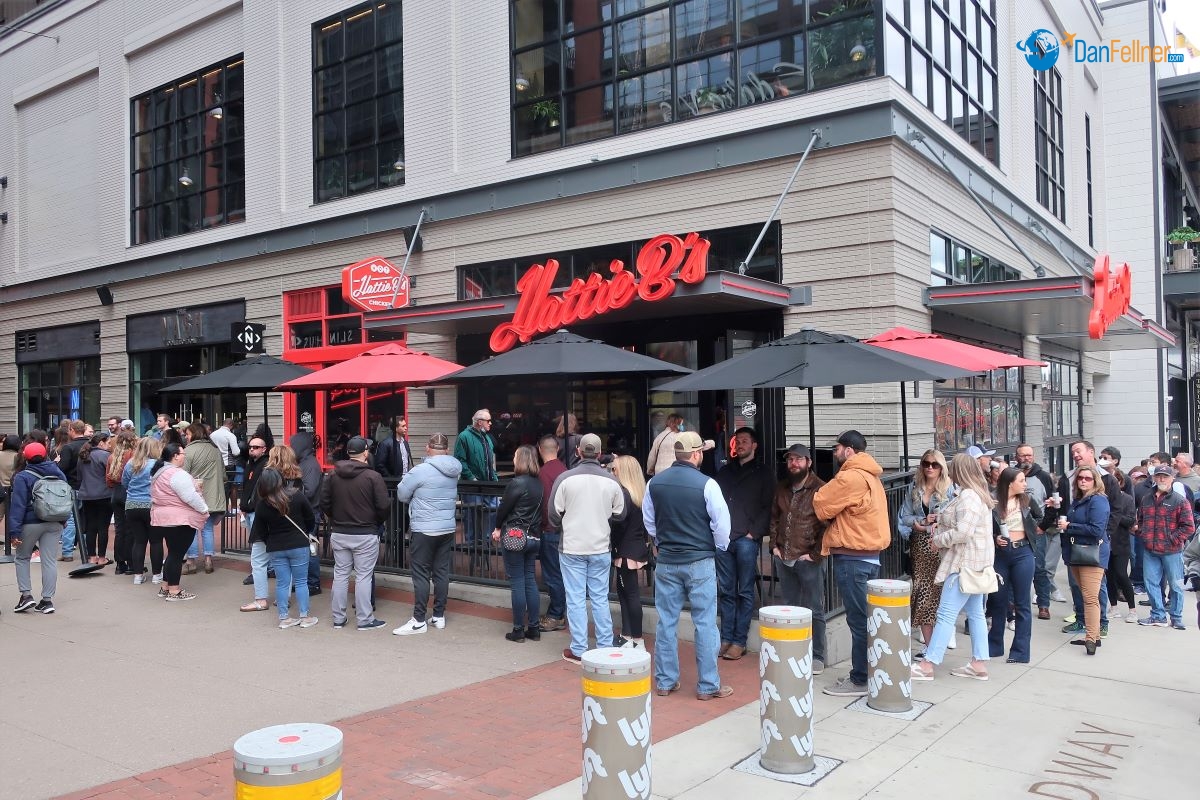
A long line of people waiting for lunch at the popular Hattie B’s Hot Chicken restaurant in downtown Nashville.
Brian Morris, the restaurant’s executive chef, told me the latter variety is made with ghost chile pepper, 170 times hotter than Tabasco sauce. Best left to patrons with “exceptional hubris,” Morris joked that one piece of the scorching poultry “will change your life for 20 minutes.”
Website for more info:
Nashville Convention & Visitors Corp.
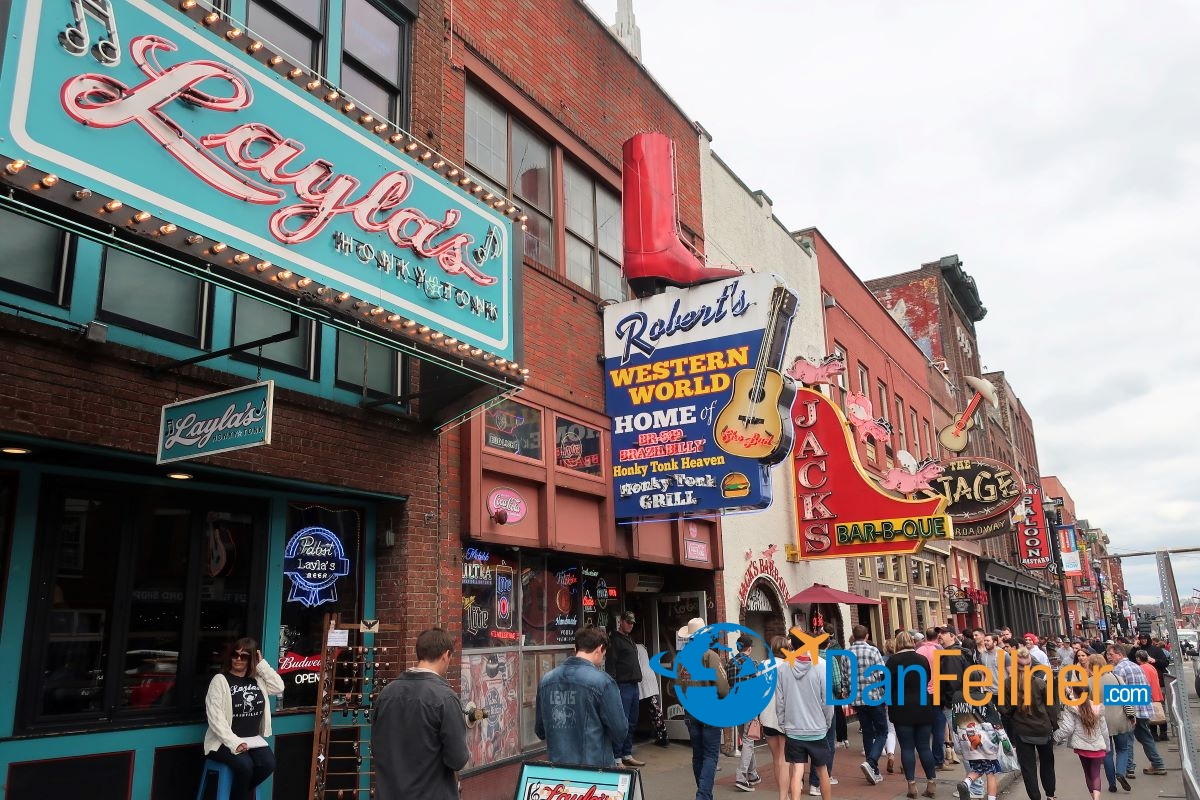
© 2022 Dan Fellner

